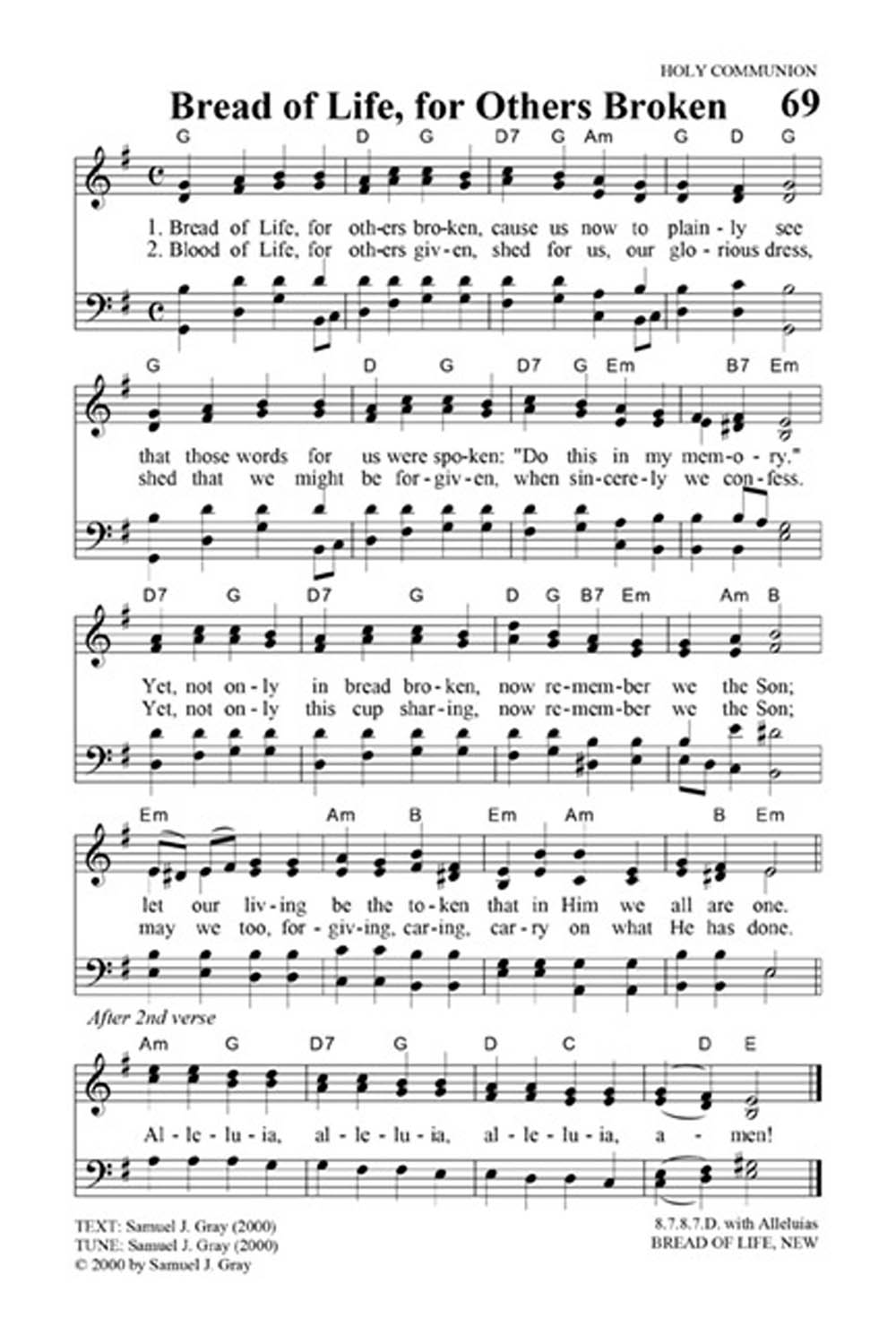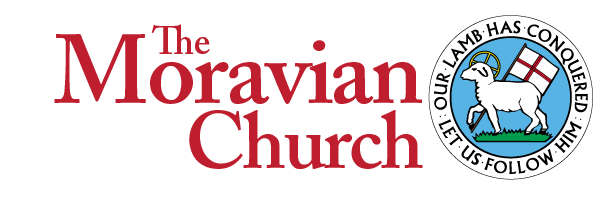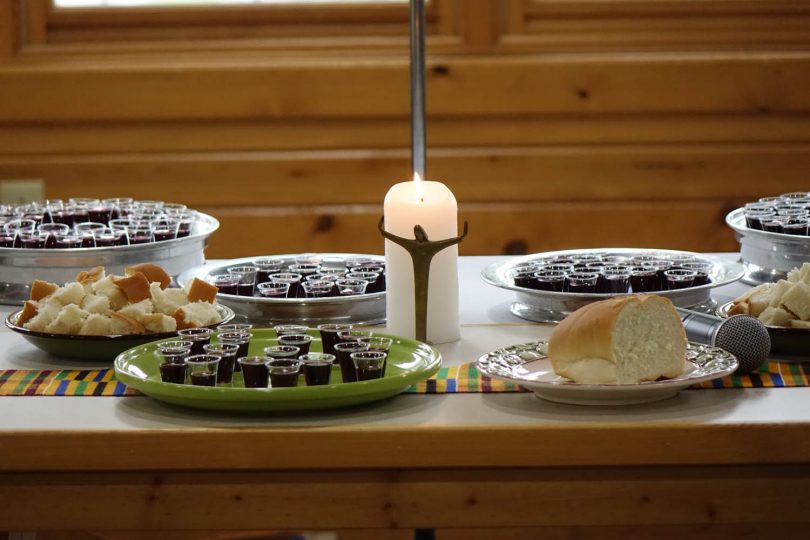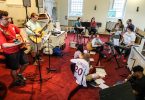As part of our new Create in Me efforts, we share a hymn from Sing to the Lord a New Song A New Moravian Songbook written by Bishop Sam Gray. Sam shares the story behind the song, while the Rev. Rebecca Craver of Edmonton Moravian Church offers ideas on how to use it in worship.
“Bread of Life, for Others Broken” • Hymn 69
The story behind the song:
In the mid 1980s, at a Conference held at Home Moravian Church in Winston-Salem, North Carolina, the Rt. Rev. Oliver Maynard shared the usual words of institution for the Lord’s Supper: “This is my body, broken for you. Do this in remembrance of me. This is my blood, shed for you. Do this in remembrance of me.” Then he paused and asked the congregation, “What is this?” What is the “this” that we are to do in remembrance of our Savior? The usual answer would be, “eat this bread” and “drink this cup.”
But Bishop Maynard challenged the congregation by suggesting that since Jesus referred to his body being broken and to his blood being given, maybe he was asking us to be broken and to give of ourselves in remembrance of him. Those words and that thought stayed with me through the following years and were particularly meaningful when I would gather at the Lord’s Table.
I began trying to express the thought in song. In 2000, when I was serving the New Hope congregation in Miami, Florida, I completed this hymn and used it during one of our Holy Communion services. Musically, I have attempted to begin the hymn with what I would call a traditional Moravian chorale-type feel. But as the hymn moves along, it, like the church, must adapt and change with the times. So, the chords change to minor and then a more “modern” chord appears toward the end. The notes end “as one” (literally) with all voices singing the same note on the final word of the two verses. Yet, our unity is not really unison, but rather more like harmony, so this is reflected in the final “Alleluia, Amen” as the hymn ends in a new key! –Sam Gray

Using Hymn 69 in worship:
As a default, most of us think that the way to use hymns in worship is to sing them as part of the worship service. While congregational singing is a wonderful and foundational part of Moravian worship service, the music can also be used in a variety of ways to help people experience God.
In this case, I wondered how the song could help shape the prayer of confession in preparation for Holy Communion. In our congregation we regularly have a time for prayer that introduces us to a variety of prayer disciplines and postures. I would use this hymn as the framework for a time of reflection and confession.
• As we begin praying I would have the congregation sing through the first verse only.
• The musician would continue to play in the background while the congregation was invited to reflect on what they bring to Christ’s table with them. I might print/project a question like, “As you consider this past week, what opportunities to witness to God’s love have come to you, and how have you engaged or not in those opportunities?”
• After some time for us to think about this question, the musician would lead us into singing the second verse together while omitting the final Alleluias.
• At this time, the music would end, and we would be invited to silently confess our sins. I might print/project a question like, “As we prepare to receive God’s gift of grace and forgiveness, what are the things in your past that you would like God to help you let go of in order to live more fully into the opportunities to share God’s abundant love with the world? I invite you to offer those things to God now.”
• The musician would softly begin to play through the music after a reasonable time for confession. If there is a choir or soloist available they could sing the final Alleluia measures to close the prayer., or the congregation could sing through the whole song to close the time of prayer together.
– Rebecca Craver







